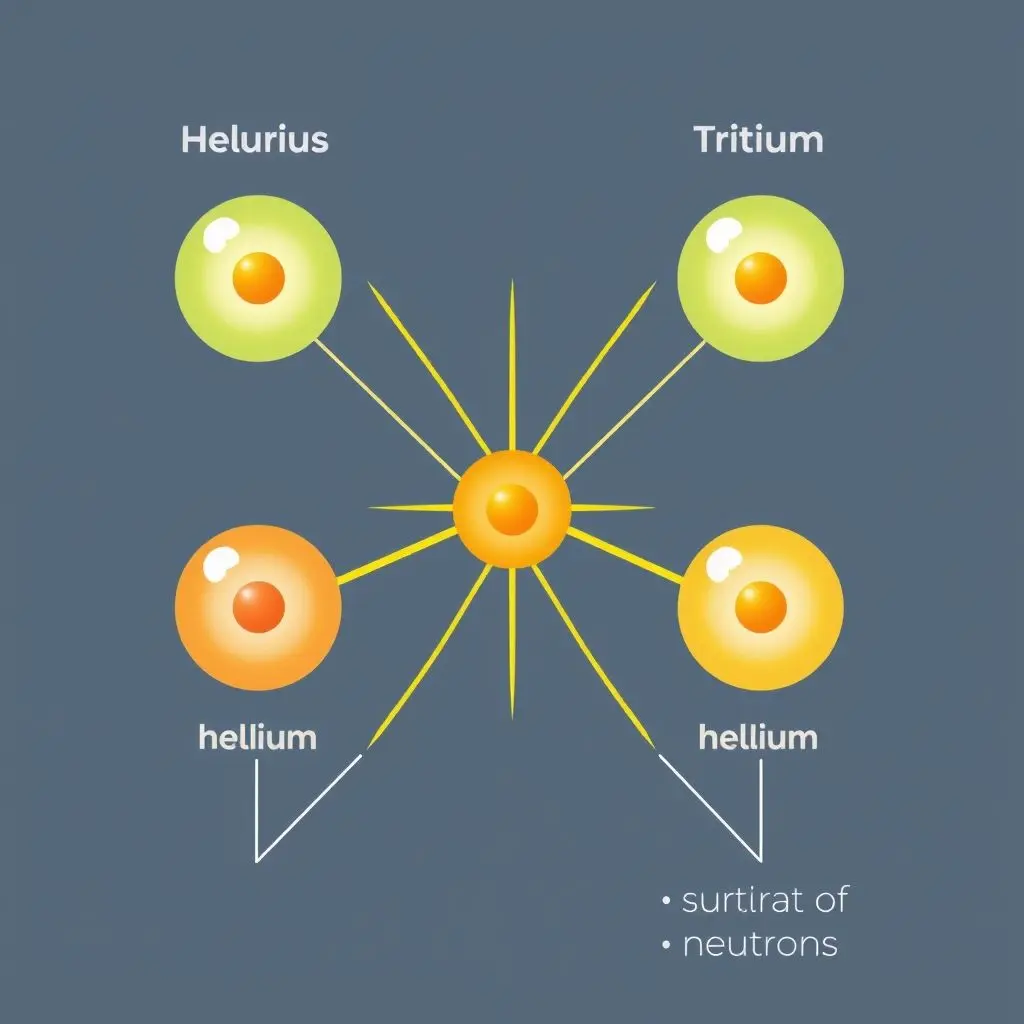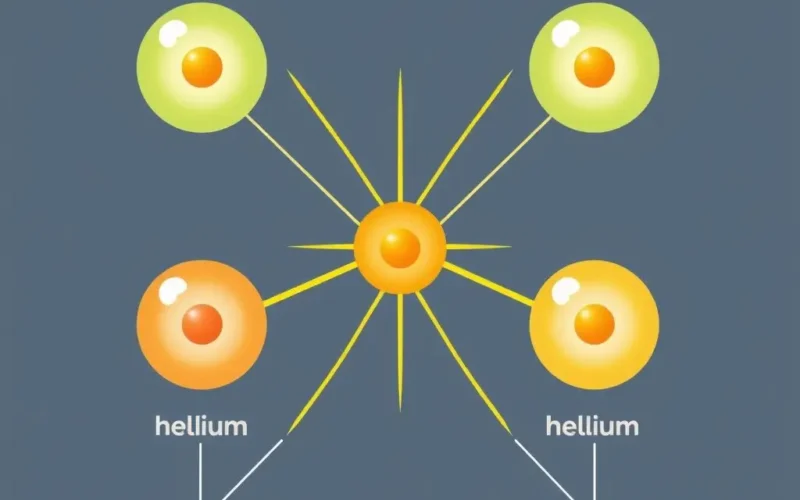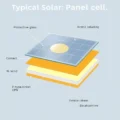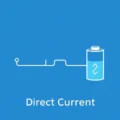Imagine hitting the road, not with a full tank of gas or a fully charged battery, but with a power source straight out of science fiction: a miniature star contained safely under your hood. Sounds wild, right? But what if we weren’t just dreaming? What if fusion-powered cars became a reality?
We’re talking about tapping into the same incredible energy process that fuels our sun. If we could harness that power on a small scale for transportation, it could fundamentally change everything we know about driving, energy, and the environment. Think unlimited, clean energy wherever you go.
Table of Contents
A Glimpse Into the Possibility: Powering the Future on Wheels
This idea is so compelling that it’s captured imaginations everywhere. In fact, we put together a quick video exploring this very concept. Take a look:
As the video touches upon, the potential benefits are staggering. But before we get lost in the utopian vision, let’s break down what fusion power actually is and why packing it into a car is a challenge of epic proportions.
Understanding Fusion: The Sun’s Secret
Unlike nuclear fission, which splits heavy atoms to release energy (like in current nuclear power plants), nuclear fusion merges light atomic nuclei, typically isotopes of hydrogen (Deuterium and Tritium), at extremely high temperatures and pressures. When these nuclei fuse, they form a heavier nucleus (like Helium) and release a massive amount of energy in the form of neutrons and alpha particles. This is the process that powers the sun and other stars.
The key attraction of fusion is its incredible energy density and relatively clean nature. A small amount of fusion fuel could theoreticaly power a vehicle for its entire lifespan, potentially even generating surplus energy. The primary fuel, Deuterium, can be extracted from ordinary water, making it virtually limitless. While Tritium is rarer and must be produced, fusion reactors could potentially breed their own Tritium.

Why Fusion for Transportation? The Compelling Advantages
If we could miniaturize and control fusion for vehicles, the upsides would be revolutionary:
- Virtually Unlimited Range: Forget range anxiety or frequent refueling stops. A fusion-powered car could theoretically run for years, perhaps even decades, on a minimal amount of fuel.
- Zero Tailpipe Emissions: The primary byproducts of Deuterium-Tritium fusion are Helium and a neutron. There are no greenhouse gases or air pollutants released during operation. This would lead to dramatically cleaner air in cities.
- Incredible Energy Density: Fusion reactions release millions of times more energy per unit mass than chemical reactions (like burning gasoline) or even nuclear fission. This is why a tiny amount of fuel could go such a long way.
- Potential for Sustainable Fuel Source: Deuterium from water means the fuel source is abundant globally, reducing dependence on fossil fuels and potentially stabilizing energy costs for transportation in the long run.
The Colossal Challenges: Why We Don’t Have Them (Yet)
Okay, now for the reality check. The concept is brilliant, but implementing it faces hurdles that are nothing short of monumental. This is where the dream hits the wall of physics and engineering as we currently understand it.

1. Miniaturization: From a Building to a Backpack?
Current experimental fusion reactors, like the ITER project or tokamaks being developed by private companies, are enormous, complex facilities filling large buildings. They require massive magnetic coils or powerful lasers, vast power inputs to start the reaction, and intricate cooling systems. Shrinking this intricate, high-energy system down to fit into a car chassis – safely and efficiently – is perhaps the single biggest challenge. It would require breakthroughs in materials science, magnet technology, and plasma physics far beyond our current capabilities.
2. Containing a Miniature Star (Plasma Stability):
To achieve fusion, fuel must be heated to temperatures exceeding 100 million degrees Celsius – hotter than the core of the sun. At these temperatures, matter turns into plasma, an ionized gas. This plasma must be confined and controlled, usually using powerful magnetic fields (in tokamaks or stellarators) or inertial confinement (using lasers). Maintaining this incredibly hot, unstable plasma in a small, constantly moving vehicle is an engineering nightmare. Any loss of containment would be catastrophic.
3. Starting and Stopping on Demand:
Getting a fusion reaction started requires immense energy. Current experiments often need large power inputs just to reach ignition temperatures. For a car, you’d need a system that can start and stop the reaction quickly and reliably – think turning the ignition key. Developing a miniature, on-demand ignition system for fusion is a significant technological gap.
4. Safety and Radiation Shielding:
While fusion fuel isn’t inherently radioactive like fission fuel, the high-energy neutrons produced during the Deuterium-Tritium reaction can make the surrounding reactor components radioactive over time. A vehicle would require significant shielding to protect occupants and bystanders from this neutron flux. This shielding would need to be compact and lightweight, adding another layer of complexity. Furthermore, any accident involving a fusion core, however small, presents unimaginable safety risks.
5. Cost and Complexity:
Developing, building, and maintaining fusion reactors is incredibly expensive, requiring precision engineering and exotic materials. Scaling this down for mass production in vehicles would likely result in prohibitively high costs, at least initially. The complexity of the required systems also presents reliability and maintenance challenges.
Comparing Fusion to Today’s Tech
Let’s put the fusion car dream into perspective by comparing it to our current transportation technologies:
- Internal Combustion Engines (ICE): Rely on finite fossil fuels, produce harmful emissions, and are relatively inefficient at converting fuel energy into motion. Fusion offers clean, abundant energy with vastly higher potential efficiency.
- Battery Electric Vehicles (BEVs): Clean operation (at the tailpipe), but dependent on battery production (resource extraction, manufacturing energy), charging infrastructure, and grid capacity. Batteries also have energy density limitations compared to chemical or nuclear fuels, impacting range and vehicle weight. Fusion would provide onboard power generation, decoupling the vehicle from the grid and offering potentially unlimited range without heavy batteries.
- Hydrogen Fuel Cells: Produce only water vapor emissions, but require complex hydrogen production (often from fossil fuels today), storage (high pressure or cryogenic), and distribution infrastructure. Fusion could potentially offer a more direct and energy-dense power source without the need for external fuel infrastructure in the same way.
While ICE, BEVs, and Hydrogen cars represent varying degrees of advancement, fusion offers a paradigm shift in energy source – a leap rather than an incremental step.

The Road Ahead: When Could This Happen?
Given the immense scientific and engineering challenges, most experts agree that practical, grid-scale fusion power plants are still decades away (often cited as 2050 or beyond). Miniaturizing this technology for mobile applications like cars is an even more distant prospect, perhaps belonging more to the realm of late 21st-century science fiction than mid-21st-century reality.
Significant breakthroughs are needed in several fields simultaneously – plasma physics, high-temperature superconductors, advanced materials resistant to neutron damage, and compact energy conversion systems. While private companies are making exciting progress in demonstrating fusion ignition and working towards commercial fusion energy, scaling that down to a car is a whole different ball game.
Frequently Asked Questions About Fusion Cars
Q: Would a fusion car be safe in an accident?
A: Safety is a critical concern. A fusion reactor core would need extremely robust containment and safety systems. In a severe accident, the risks associated with uncontrolled plasma or radiation leaks, even if temporary, would be immense. Current concepts for large reactors prioritize passive safety features, but miniaturizing this for a vehicle is a massive challenge.
Q: How big would the fusion reactor be in a car?
A: This is the core challenge – miniaturization. Today’s experimental reactors are massive. For a car, it would need to be small enough to fit within the vehicle’s structure, potentially no larger than a conventional engine block, while still generating immense power and containing extreme temperatures/pressures. This requires breakthroughs we haven’t seen yet.
Q: What fuel would fusion cars use?
A: Most likely, they would use Deuterium and Tritium, isotopes of hydrogen. Deuterium is readily available from water. Tritium is rarer but can potentially be produced within the reactor itself using lithium. The amounts needed would be tiny compared to gasoline.
Q: Would fusion cars produce any waste?
A: The primary reaction byproduct is inert Helium. However, the high-energy neutrons generated can activate the reactor’s structural materials, making them radioactive over time. This activated material would constitute radioactive waste, but it’s generally considered less long-lived and less hazardous than the waste from nuclear fission reactors.
Q: When can I buy a fusion car?
A: It’s highly unlikely you or your children will see commercially available fusion-powered cars on the road. The technology for even large-scale grid power generation is still experimental and decades away. Miniaturizing it for cars is a far more complex and distant prospect, possibly something for generations far into the future.
Fueling Imagination, Driving Innovation
While the vision of a fusion-powered car remains firmly in the realm of future possibilities, perhaps even science fiction for now, it serves as a powerful inspiration. It highlights the incredible potential of fusion energy – a clean, abundant, and vastly energetic source. The pursuit of this dream, both for power plants and potentially for transportation someday, drives innovation in physics, materials science, robotics, and engineering.
Even if fusion cars are not on the immediate horizon, the ongoing research into fusion energy is crucial for a sustainable future. And who knows? With continued scientific progress and ingenious engineering, perhaps one day, a vehicle powered by a controlled miniature star won’t seem so wild after all.





